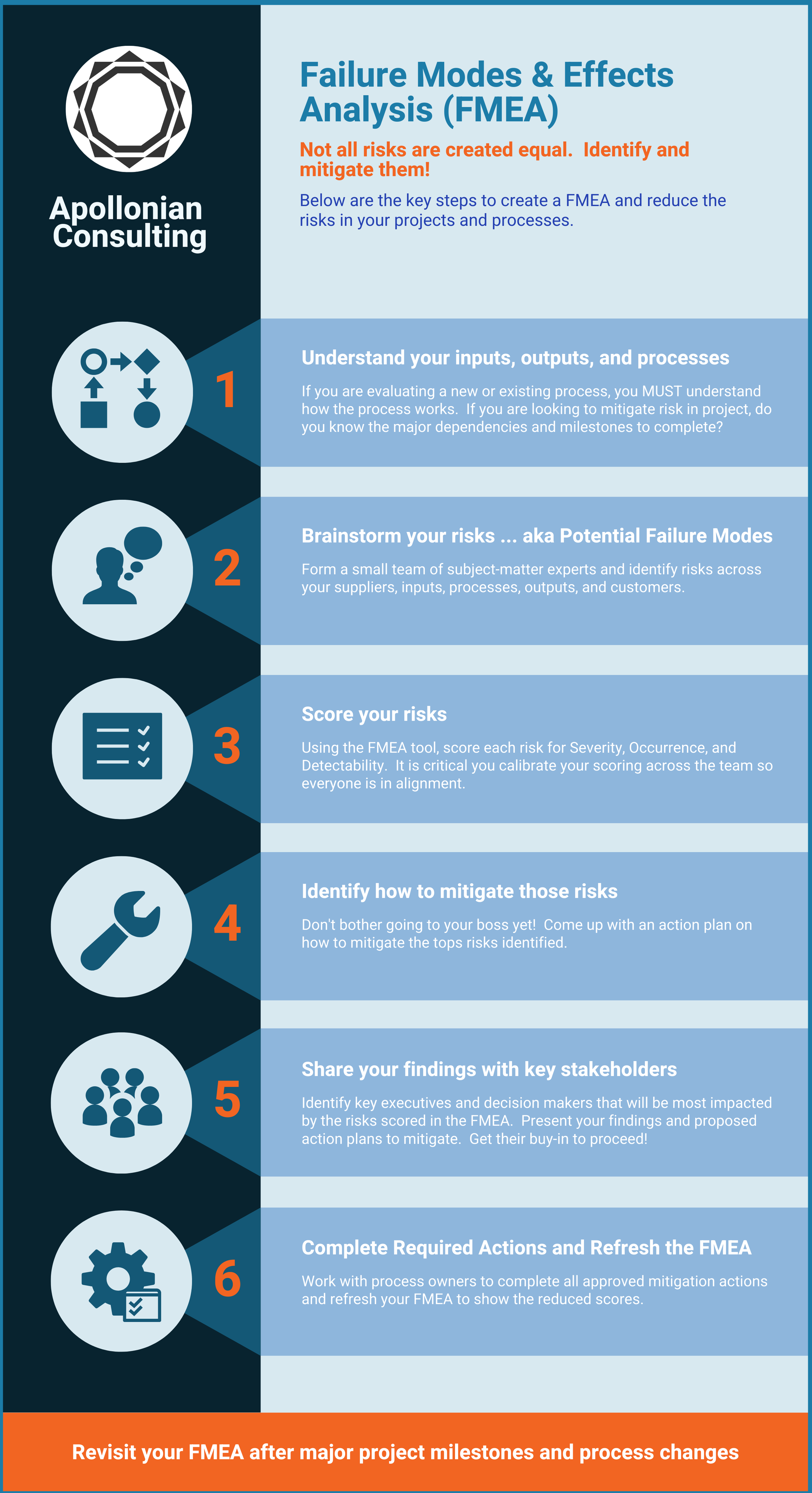FMEA Part 5 - Execute plans and refresh your scores
Introduction
As we discussed earlier, an FMEA is a tool that helps you identify potential issues within your project. Once you have completed the process, identified the risks, it is time to mitigate those risks and perform a final RPN score refresh to see if you have achieved your objectives. But first, here is a summary of our journey so far for your reference. Today we will be discussing the last step.
Execute your action plans as communicated with your stakeholders
Make sure that deadlines are clear for all stakeholders and resources working on the mitigation. Often IT needs to be involved, so make sure this is on their priority list if approved.
Ownership of each major deliverable needs to be assigned and communicated.
Review the status of these action items frequently with your team. Some of these risk mitigations might be a prerequisite for you going live with a project, so give this the right sense of urgency.
Detectability actions can be easy wins
Detectability fixes are often quick and can help with measurement of issues as you resolve them. You can't manage what you don't measure!
Actions such as establishing review meetings or standing up a simple exception report can add a lot of value upfront.
Remember that additional controls don't actually "fix" the underlying issue. Make sure you are still focused on root cause solutions.
Refresh your preliminary RPN scores
When you created your action items, you populated the mitigated RPN scores with preliminary assumptions. Now is your opportunity to finalize those.
Make sure you challenge each score. Mitigation plans might of changed since your preliminary scoring. Any residual risk needs to be understood.
Your entire team that helped with the initial scoring and action plans should be part of this process.
If your revised scores are still higher than expected, how will you address? Do stakeholders need to be informed?
Communication back to Stakeholders
Make sure your stakeholders are informed of the final action plan status and updated RPN scores.
If there are any open items, those need to be disclosed with timelines and owners.
Many teams skip this step, but that is truly unfortunate. As a golden rule, you need to identify a problem, fix the issue, then tell people about it. Don't lose an opportunity to tell senior management about the team's accomplishment. This will build credibility and help with future exercises.
Conclusion
The FMEA process is a simple, but important tool to help identify risk in your processes and projects. Here are some key takeaways:
The upfront risk calibration is extremely important and worth taking time to get right. After that, future FMEAs will be much easier.
For simple processes that are already documented, an FMEA can be completed with a high-functioning team in an hour. This can provide an enormous amount of value very quickly. For complex processes, it might take additional sessions to flush out the appropriate SIPOC, process maps, and failure modes.
Often the longest portion of the FMEA process is the actual risk mitigation plan. That said, look for quick wins to stop the bleeding or that might be considered key dependencies.
Use the FMEA to increase team credibility and to help stakeholders address risks with a united front. The conversations can be political, but risks need to be tackled regardless. Good leadership will value this exercise and the dialog it helped generate.
We hope you enjoyed the FMEA articles posted on this blog. Here is a link back to Part One of our FMEA article series for your reference.
Apollonian Consulting is well positioned to help your organization establish a culture of risk mitigation using the FMEA as a key tool. Click here to schedule a free 30 minute consultation to connect.


